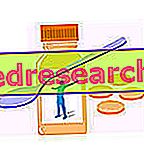
Nitrate NO 3- derives from the complete dissociation of nitric acid HNO 3 or nitrates in aqueous solution, according to the following formula:
HNO 3 + H 2 O → H 3 O + + NO 3 -
NITRATES
Nitrates are the salts of nitric acid (HNO 3 ) and are substances in which the nitrate ion (NO 3 -) is present.
Being salts, they are all very soluble in water, and the most important are:
- Aluminum nitrate
- Ammonium nitrate
- Silver nitrate
- Sodium nitrate
- Potassium nitrate
- Lead nitrate
- Strontium nitrate
- Thallium nitrate
- Zinc nitrate hexahydrate
However, the most common in nature are sodium nitrate and potassium nitrate.
The nitrate ion (and some of its salts) performs many functions: it is in fact fundamental for plant metabolism; it is an excellent fertilizer (particularly when it is inside the NH 4 NO 3 ammonium nitrate), also acting as nourishment for denitrifying bacteria, which have the function, starting from it, of producing molecular nitrogen N 2 .
Silver nitrate, in 1900, was used for the production of the first photographic devices, and is now used instead to evaluate the potability of tap water; moreover, it acts as a catalyst in the basic reaction of the alcohol test operation.
Nitrates are rapidly transformed into nitrous acid, and then into nitrites, thanks to the nitrate-reductase present in the bacterial flora of the oral cavity and intestinal lumen. This conversion interferes negatively with the functions of our body, because nitrites interact with hemoglobin transforming it into methaemoglobin, unable to perform its function of transporting oxygen.
Furthermore, nitrites can react with amines (present in food products containing proteins), forming N-alkyl-nitrosamines: compounds classified as carcinogenic and toxic. This formation, fortunately, is contrasted by vitamin C (ie ascorbic acid) and vitamin E (tocopherol), vitamins capable of blocking the conversion of nitrites to nitrosamines, transforming them into nitric oxide, with an antithrombotic effect.
Nitrates are less toxic than nitrites, however at high concentrations they can cause motor, behavioral disorders, food allergies and negative effects on reproduction. It is fundamental to underline that both nitrates and nitrites are present in considerable quantities in many foods, and they are not always present as voluntary food additives, but they can also be inside foods due to fertilizers used in crops or pollution. of the water table.
Nitrates are used as food additives to increase the shelf-life of foods and are used as antibacterials. The nitrites are used, however, in smaller quantities, to enhance / preserve the color and flavor of the meat. The latter are rapidly absorbed in the intestine and remain little in the circulatory stream; almost half of the nitrites are eliminated in the urine, but it is still not known well what happens to most of them; however, it was found that within 20-21 days of ingestion they disappear from the body.
It was highlighted by a group of Jordanian researchers, thanks to a study carried out on mice, that nitrites are able to predispose to carcinogenesis, and have negative effects on the immune system, considerably reducing the amount of T and B lymphocytes, and resulting in a consequent lowering of the immune defenses both at humoral and cellular level; they also appear to reduce weight gain in newborns and increase infant mortality.
| E200 | E201 | E202 | E203 | E210 | E211 | E212 | E213 |
| E214-E2119 | E220 | E221 | E222 | E223 | E224 | E225 | E226 |
| E227 | E228 | E230 | 231 | E232 | E233 | E234 | E235 |
| E236 | E237 | E238 | E239 | E240 | E242 | E249 | E250 |
| E251 | E252 | E260 | E261 | E262 | E263 | E270 | E280 |
| E284 | E285 | E290 | E296 | E297 |




